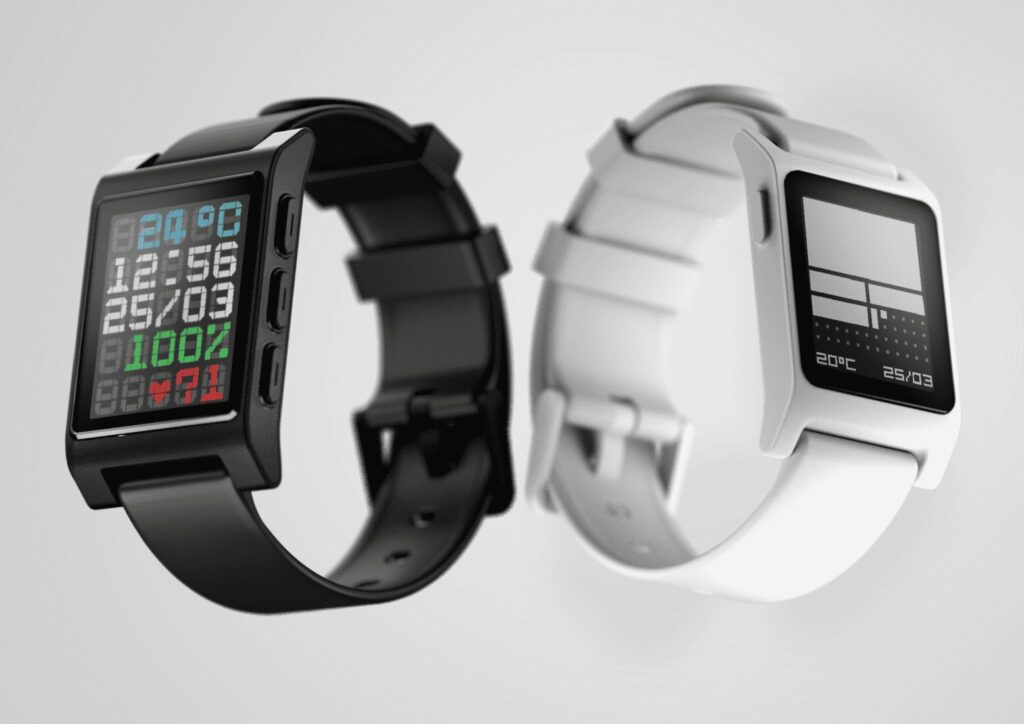In an unexpected yet thrilling turn of events, the iconic Pebble smartwatch is making its way back into consumers’ hands. Eric Migicovsky, the enterprising founder behind the original Pebble, has announced the launch of two new smartwatches—the Core 2 Duo and Core Time 2. These reinvented devices nod to the classic Pebble design while interweaving contemporary technological advancements.
The catalyst for this resurgence appears to be Google’s noteworthy decision to open-source the Pebble operating system, PebbleOS, earlier this year. This strategic move follows Google’s acquisition of Pebble’s assets back in 2016. Fueling this comeback is not only technological innovation but also the passion and ingenuity of Migicovsky, a dedicated visionary determined to breathe new life into the brand.
The newly introduced Core 2 Duo and Core Time 2 models cater to enthusiasts who prioritize the fundamentals: simplicity, long-lasting battery life, and ease of customization. Both watches have been designed with these principles at their core. The Core 2 Duo features a 1.26-inch black and white e-paper display with a resolution of 144×168 pixels, encased in a polycarbonate frame. Its counterpart, the Core Time 2, boasts a larger 1.5-inch 64-color e-paper display with a resolution of 200×228 pixels, enclosed within a sleek metal frame. Interaction is seamless with four buttons for navigation, with the Core Time 2 also featuring a touchscreen for an intuitive user experience.
These devices, expected to last up to 30 days on a single charge, illustrate Pebble’s commitment to durability and efficiency. Each model is designed to withstand water exposure with a target water resistance rating of IPX8, ensuring they meet the needs of users with active lifestyles. Priced at $149 for the Core 2 Duo and $225 for the Core Time 2, they are set to launch in July 2025 and December 2025, respectively.
The revival of Pebble is not merely a return to form; it is a nostalgic journey to a simpler time. For many, the original Pebble watch defined the early era of wearables, with critics in 2014 lauding its groundbreaking features such as a week-long battery life and a highly readable screen. Even through the evolving smartwatch landscape, its emphasis on simplicity and practical functionality struck a chord with a dedicated user base.
At the heart of this revival is the open-source PebbleOS. This decision revitalizes an extensive library of more than 10,000 apps and watchfaces, inviting developers and hobbyists alike to continue expanding the Pebble ecosystem. There is even the potential for older Pebble watches to be upgraded to the new PebbleOS, offering fans a chance to resurrect their well-loved devices.
For those eager to become a part of this new chapter in Pebble’s history, pre-orders are available exclusively through the official store. The strategy is to maintain limited quantities, balancing production with consumer demand, ensuring the venture remains sustainable and manageable.
In essence, Pebble’s comeback is more than a product launch—it is a homage to a beloved piece of technology history, reformulated for today’s market. With a renewed focus on device stability, community-driven innovation, and beloved retro design elements, this revival is sure to enchant both nostalgic fans and new users alike, in an era where retro tech is being celebrated once again.


